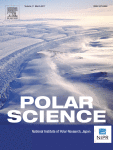Quantitative ecological risk assessment of inhabitants exposed to polycyclic aromatic hydrocarbons in terrestrial soils of King George Island, Antarctica

Share this post on: Twitter Facebook
This study aims to conduct a quantitative ecological risk assessment of human exposure to polycyclic aromatic hydrocarbons (PAHs) in terrestrial soils of King George Island, Antarctica. Generally, the average PAH concentrations detected in King George Terrestrial Soils (KGS) were appreciably lower than those of World Marine Sediments (WMS) and World Terrestrial Soils (WTS), highlighting the fact that Antarctica is one of the most pristine continents in the world. The total concentrations of twelve probably carcinogenic PAHs (ΣPAHs: a sum of Phe, An, Fluo, Pyr, B[a]A, Chry, B[b]F, B[k]F, B[a]P, Ind, D[a,h]A and B[g,h,i]P) were 3.21 ± 1.62 ng g−1, 5749 ± 4576 ng g−1, and 257,496 ± 291,268 ng g−1, for KGS, WMS and WTS, respectively. In spite of the fact that KGS has extremely low ΣPAHs in comparison with others, the percentage contribution of Phe is exceedingly high with the value of 50%. By assuming that incidental ingestion and dermal contact are two major exposure pathways responsible for the adverse human health effects, the cancer and non-cancer risks from environmental exposure to PAHs were carefully evaluated based on the “Role of the Baseline Risk Assessment in Superfund Remedy Selection Decisions” memorandum provided by US-EPA. The logarithms of cancer risk levels of PAH contents in KGS varied from −11.1 to −7.18 with an average of −7.96 ± 7.73, which is 1790 times and 80,176 times lower than that of WMS and WTS, respectively. All cancer risk levels of PAH concentrations observed in KGS are significantly (p < 0.001) lower than those of WMS and WTS. Despite the Comandante Ferraz Antarctic Station fire occurred in February 25th, 2012, both the cancer and non-cancer risks of environmental exposure to PAHs were found in “acceptable level”. © 2016 Elsevier B.V. and NIPR. All rights reserved. Appear in Polar Science by Elsevier Authors: S. Pongpiachana,M. Hattayanone, O. Pinyakong, V. Viyakarn, S.A. Chavanich, C. Boe, C. Khumsup, I. Kittikoon, P. Hirunyatrakul